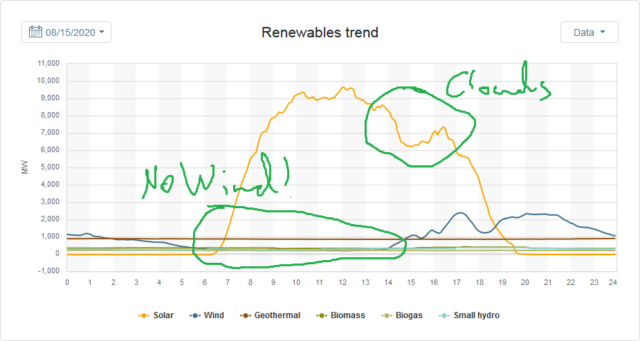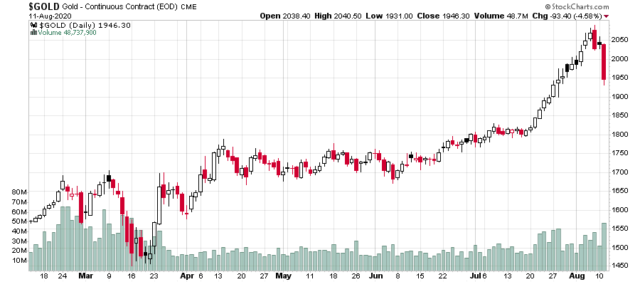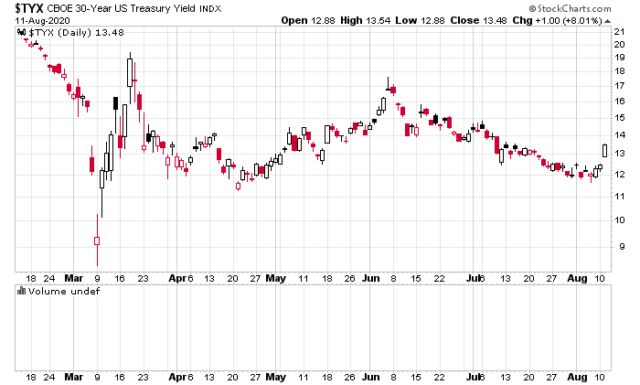I took a few days out in a remote area (i.e. away from major urban centres) to do some reflection and avoiding the airwaves for the most part. It allows for mental digestion without dealing with the day to day distractions. Also, due to Covid-19, the tourism sector for the most part is decimated, which is why it is the perfect time to go out to places that would otherwise be swamped with tourists.
Covid
It’s pretty evident that nomenclature has made this much more difficult than it should be. The virus that causes COVID-19 is SARS-CoV-2. An analogy is that HIV is the virus that causes AIDS. Unfortunately, in everyday conversation, the words “COVID-19” refer to the disease and are conflated with the virus. There is ample evidence that even if you have the virus, there is a very good chance that you don’t get the disease, but the reports are still such that you are “COVID-positive”.
There are plenty of viruses out there that people are completely asymptomatic to. A good example is the Herpes Simplex virus, where it is estimated that 2/3rds of the world population has it. The disease that the virus causes is called Herpes simplex (same name as the virus).
Until people make a proper distinction between the virus and the disease, I generally believe public policy will be quite irrational in circumstances. Specifically, efforts to contain the virus by caging people and restricting various activities are effective in the short term, but pay very little to the fact that in the longer run, there will be re-infections. Jurisdictions that have claimed victory (e.g. New Zealand, Atlantic Canada, Hong Kong) will discover that the virus will re-emerge despite all efforts to contain it. This is ultimately a futile battle.
If I was pulling the public policy levers, it would be to focus on those obviously vulnerable to the disease and not the virus. As the age cohort is the dominant variable that correlates with mortality and severe symptoms, these people should continue to take extra precaution – both due to SARS-CoV-2, but also because there are a boatload of other viruses out there that also correlate positively with age in terms of mortality.
But in the meantime, we have long since passed the point where COVID-19 is used for rent-seeking and other political purposes. This is obvious in places like Hong Kong, which authorities are claiming to cite as the reason why they should shut down again (real reason – legislative elections are coming up and they won’t be good for the establishment), but also here in Canada, where incessant “mask or no mask” polarization completely misses the point – people that get the virus don’t necessarily get the disease.
This search for a vaccination is also a huge red herring, but it will serve a psychological purpose – a light at the end of the tunnel. However, my deep suspicion is that this will be similar to attempts to vaccinate against the common cold (Rhinoviruses and other Coronaviruses) and the annual “flu season vaccination” which protects against certain strains of flus (H1N1, H5N1, etc.). There is evidence to show such vaccinations do have effectiveness, but it is never a “black or white” situation – the flu vaccination, for instance, ranges in effectiveness from 10% to 50% (if you believe the evidence!), but it is impossible to measure after the fact – for ethical reasons, you can’t run a double-blind test where you purposefully infect people in one arm. Measuring something that does not happen is much more difficult – if you took the flu vaccine, but didn’t catch the disease, who is to say that you just simply never would have gotten it anyway?
So here is my prediction on the COVID-19 vaccination – there will be something released, it will be ‘proven’ to be effective, but its effectiveness will be diffuse (let’s call it a statistically significant 10% success rate). Victory will be claimed, and a whole bunch of people will take it (which will spark another public controversy over mandatory vaccinations vs. not taking them) and the world will move on.
Fundamentally, what is going on is much more simpler – we all have immune systems. Some of us are much better at fighting certain classes of viruses than others. There are some of us that have very good immune systems, and some of us that get sick all of the time. Statistically speaking, if you are young, treat your body well and have had general exposure to other amounts of viruses in your past life, your body will be well adapted to fighting SARS-CoV-2. Some will be much more vulnerable. A simple analogy is that happened to when the European explorers introduced smallpox to the native populations in North America – the natives didn’t stand a chance since their immune systems were not trained at all to fight the classification of viruses that had brewed up in the filthy urban centres of Europe over the prior centuries (prior to the advent of urbanized sewage systems, it made Chinese wet markets look very sanitary by comparison).
Another analogy is physical fitness – if you are asked to run 5km in a 75th percentile time and you haven’t done it before with zero athletic training, chances are if you actually forced do it, it would probably cause severe damage (shin splints to name the least, but it would probably cause severe cardiovascular damage). Recall the first recorded instance of a person running a marathon died after completing his mission (Pheidippides)! However, if your body is trained, you will be adapted to the stress that heavy physical activity incurs. While this simplifies matters with regards to immunology, the body that has faced a variety of viruses in the past will likely do better dealing with SARS-CoV-2 than those that are inherently sensitive.
Finally, if this virus is anything like other viruses, there will be subtle mutations that will increase and decrease the prevalence of disease – just like how you can get a “light” cold and a “bad” cold.
I really think it’s time we move on.
Investments in Markets
It is evident to me that investing in ‘stuff’ rather than ‘dollars’ is going to be the right decision. Other than some (rapidly depreciating) cash, I hold nothing financial in my portfolio. No banks, no insurers, etc.
There is currently a boom in technology-related issuers and I am content to let this segment of the market figure itself out with their high valuations. The rush to liquidity to largecap issuers (the FANGS, and throw in Tesla in there while you’re at it) are also a result of passive indexation – you throw a dollar into an S&P 500 index fund, and 20 cents of your investment automatically get forced into the top 5 or 6 companies – who’s going to sell it to you? As a result, prices rise when liquidity rises. The major indicies will likely continue rising.
It will eventually implode (analogy is year 2000) and when it does, the survivors left standing will be the ones that are actually producing real stuff. This means primary industry participants (that can actually produce such products at competitive costs as primary industries are quite competitive), but secondary industry participants that produce viable products from primary industry participants will also do quite well. I realize this is quite abstract, but I do have some names in mind.
Commodity investing
Gold is going crazy right now (and rightfully so – why bother speculating on negative interest rates with government bonds that are effectively yielding zero, when you can just get your hands on the shiny yellow metal?). I do not like any of the gold mining companies – they are all capital pits. Their market value will go up on the basis of reserves, rather than having efficient operations and capital management. Perhaps I’m a little too dismissive and throwing out the baby with the bathwater, but I think there are too many eyeballs on gold producers (despite most of these producers not being very well represented on the indicies). If you believe in gold, just buy the futures contracts and get price exposure that way.
Oil is a more interesting space, at least in Canada. Canadian SAGD producers (and more conventional low-decline producers) are going to be in shockingly decent shape – most of the capital has been spent and it requires relatively less maintenance capital to keep the production flowing. Contrast this to capital-intense shale producers which is now financially nonviable (and institutions are now smart to how this pricing model is no longer functional). Especially in Canada, environmental laws are incumbency protection for the major producers, and now that US shale has peaked (Q4-2019), they are going to be more reliant on imports once demand gets back up again. With Trans-Mountain continuing, Coastal Gaslink proceeding and Keystone probably continuing to fruition (maybe), it actually bodes quite well for Canada. Teck not getting into the oil sands game was probably the death knell for further oil production in Canada in the foreseeable future, which means the Suncor, CNQ and Cenovuses are going to be reaping the rewards.
My guess is we will see a triple digit oil price in a couple years. Other fossil fuels (gas, coal) will follow. It will be considered a massive surprise from market participants that thought the days of fossil fuels were done.
Again, just like gold stocks, probably investing in futures contracts are the easier method, although in Canada, most of the companies have been hacked so badly in the past decade that they are lean operations and you can pick and choose from them to get sufficient leverage (in addition to being registered account eligible).
Finally, the outlook for Coal companies right now feels like how the market felt about tobacco investing in the late 1990’s. The highest returns are to be made when an entire sector is shunned without any hint of contrarianism (which is what you see now in the airline and cruise ship industry).
Election Politics – USA
It is tough to believe the US Presidential Election is just over three months away. Four years ago the election felt like it lasted a year. This time around it feels like it hasn’t even started yet.
The most credible gambling site where you can throw a bunch of money at and not get defrauded (they respect wagers from people that actually are winning clients) is Pinnacle Sports. They have Trump at +156 (39% to win) and Biden at -184 (65% to win) (note that the excess of 4% of the total of 104% is the “bid/ask spread”). Another credible site (Betfair, but not available for Canadians) has Trump at 9/5 odds. The basis for this is likely the litany of polling showing that Trump is down by about 9% across the country, which in most ordinary circumstances would result in a slaughter.
However, this is not any ordinary election, and the winner is determined from the electoral college and not the popular vote. Just like in 2016, Trump is going to get slaughtered by significant margins in California and New York, but it doesn’t matter whether he loses by 40% or 20% in those states – the outcome is already pre-determined. The question is how he does in MI, OH, FL, NC, PA.
The other question is if polling data is reliable. In both Canada and the USA, elections are determined by who turns out to vote, and polling typically does not capture this data very well. If I were to guess at present, I would say the odds are reversed.
Election Politics – Canada
There is a non-trivial chance of Justin Trudeau calling an election for October. Be warned.


